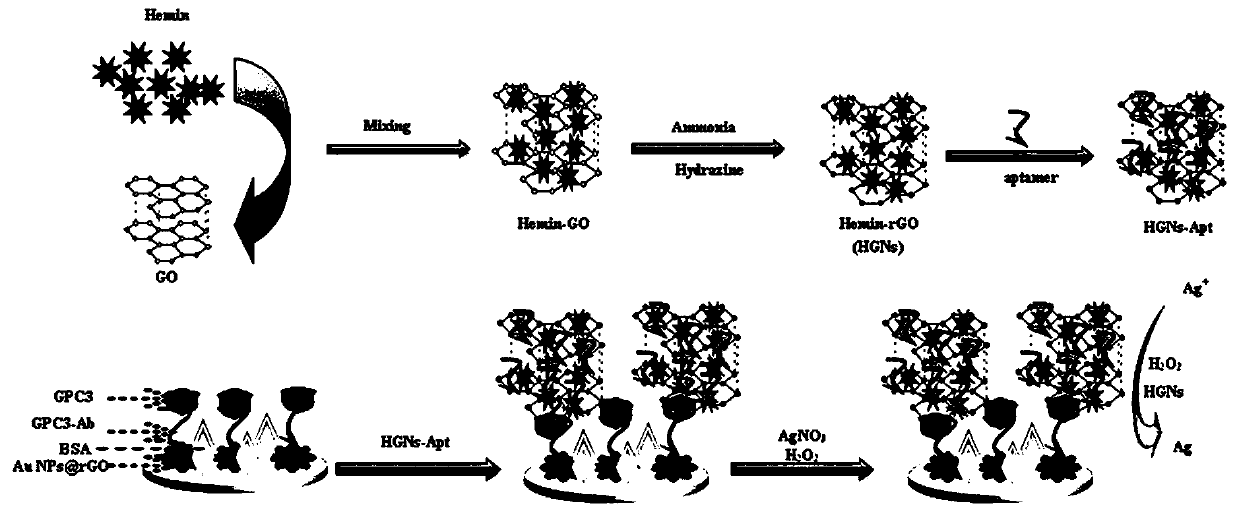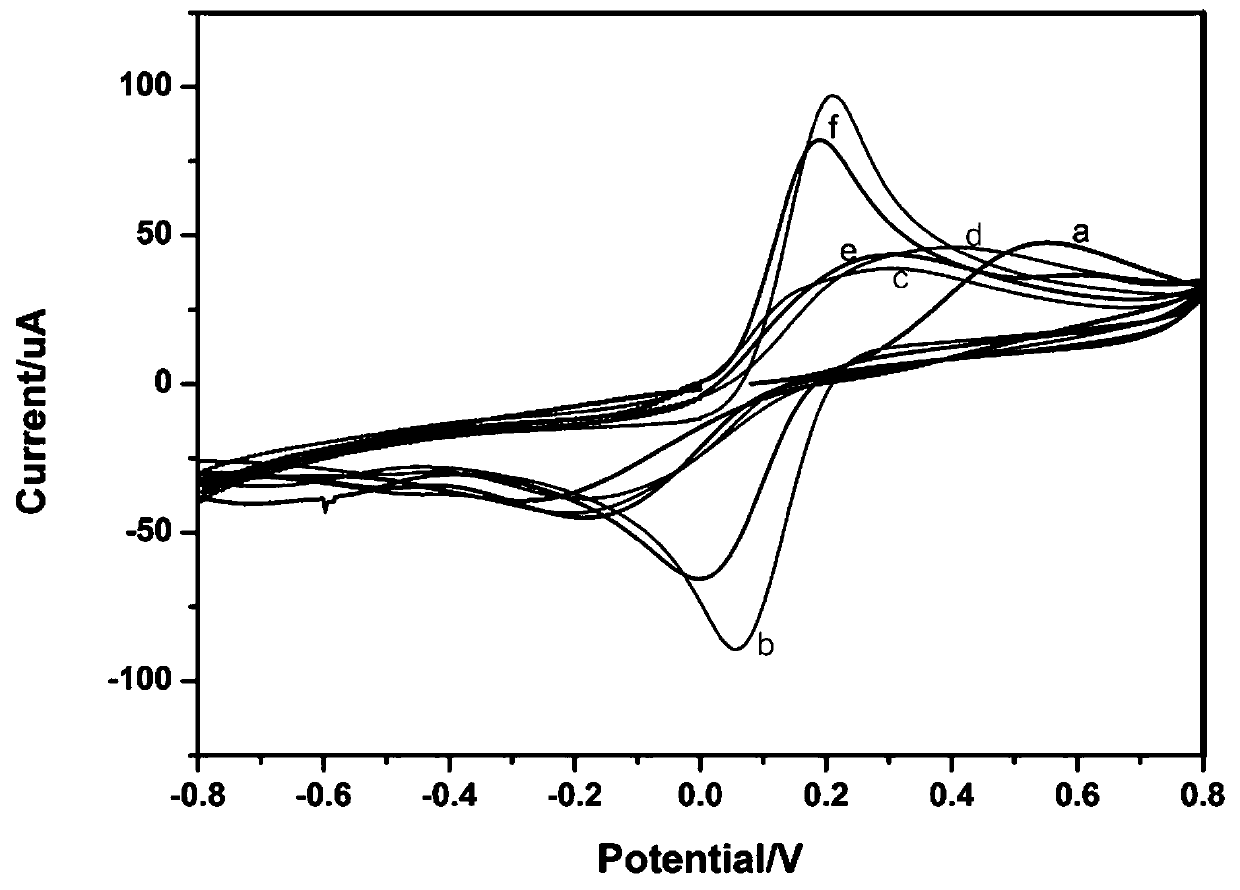Peroxidase catalytic silver deposition-based method for detecting GPC3
An electrochemical and solution technology, applied in the field of detection of GPC3 based on electrochemical biosensors, can solve the problems of complexity, high cost, cumbersome operation, etc., and achieve the effect of simple operation, easy miniaturization, and sensitive detection
- Summary
- Abstract
- Description
- Claims
- Application Information
AI Technical Summary
Problems solved by technology
Method used
Image
Examples
Embodiment Construction
[0043] The present invention will be described in detail below in combination with specific embodiments.
[0044] figure 1 is a schematic of the detection of GPC3 based on peroxidase-catalyzed silver deposition. First, HGNs composites were prepared by a one-step reduction method, and HGNs were used to immobilize GPC3-Apt to form HGNs-Apt signaling probes. Using gold nanoparticles to modify activated SPCE, GPC3-Apt was immobilized on the surface of gold-deposited screen-printed electrodes by physical adsorption. When GPC3 was further modified, the specific recognition reaction between GPC3-Apt and GPC3 generated aptamer-antigen complexes arrayed on the electrode surface. HGNs-Apt nanomaterials were immobilized on the electrode surface through π-π bonds and electrostatic adsorption to form aptamer-antigen-aptamer sandwich complexes, and finally silver nanoparticles were deposited on SPCE. HGNs with peroxidase-like catalyzed deposition induce silver deposition. Generates a curr...
PUM
 Login to View More
Login to View More Abstract
Description
Claims
Application Information
 Login to View More
Login to View More - R&D
- Intellectual Property
- Life Sciences
- Materials
- Tech Scout
- Unparalleled Data Quality
- Higher Quality Content
- 60% Fewer Hallucinations
Browse by: Latest US Patents, China's latest patents, Technical Efficacy Thesaurus, Application Domain, Technology Topic, Popular Technical Reports.
© 2025 PatSnap. All rights reserved.Legal|Privacy policy|Modern Slavery Act Transparency Statement|Sitemap|About US| Contact US: help@patsnap.com



